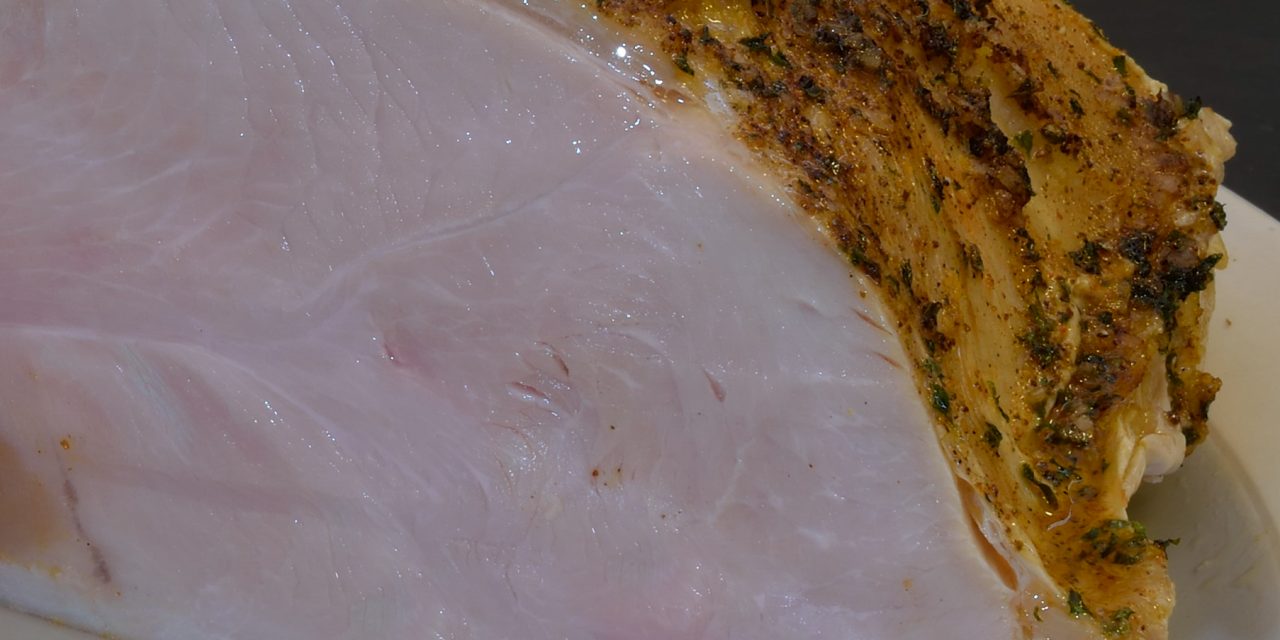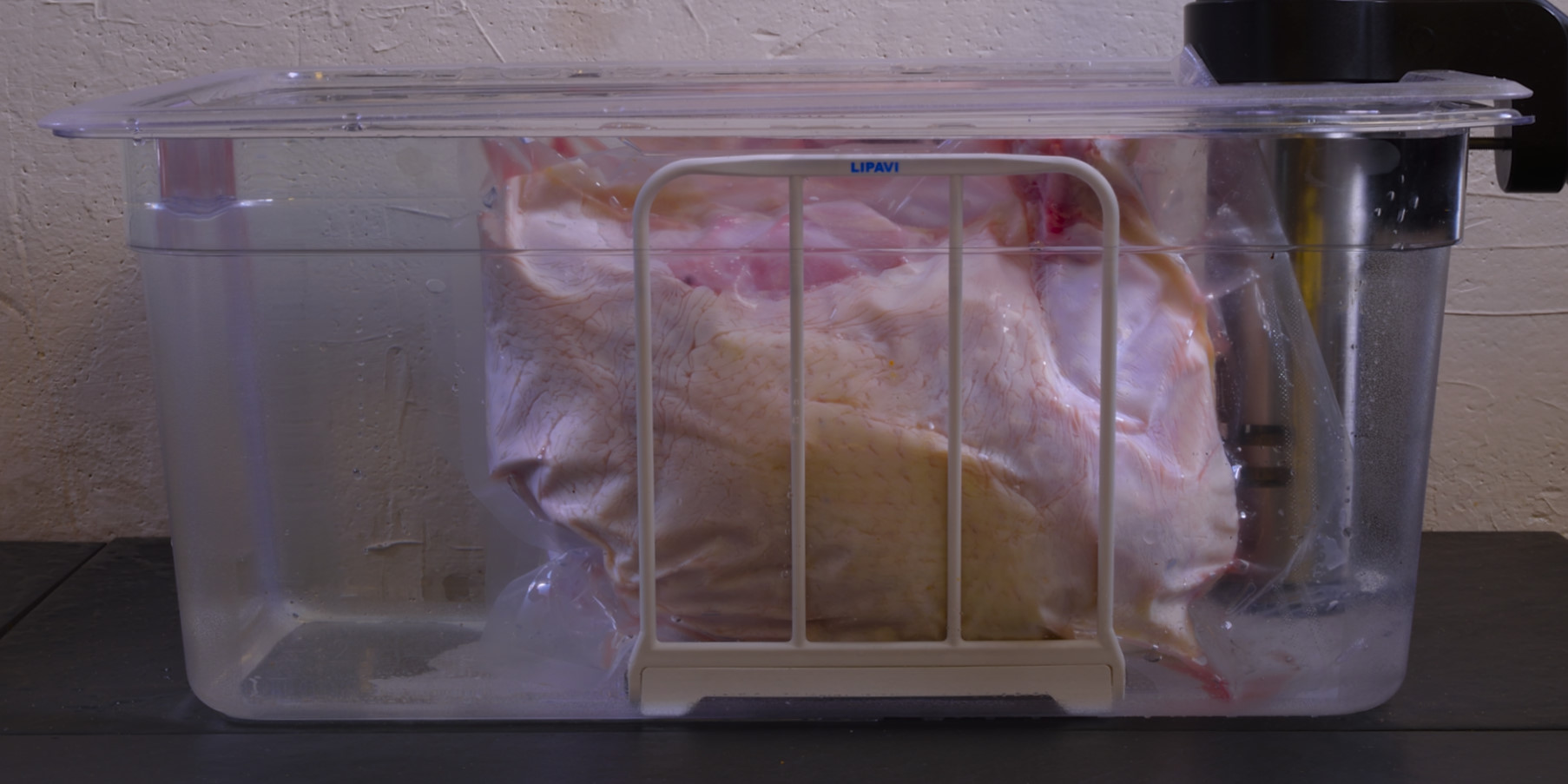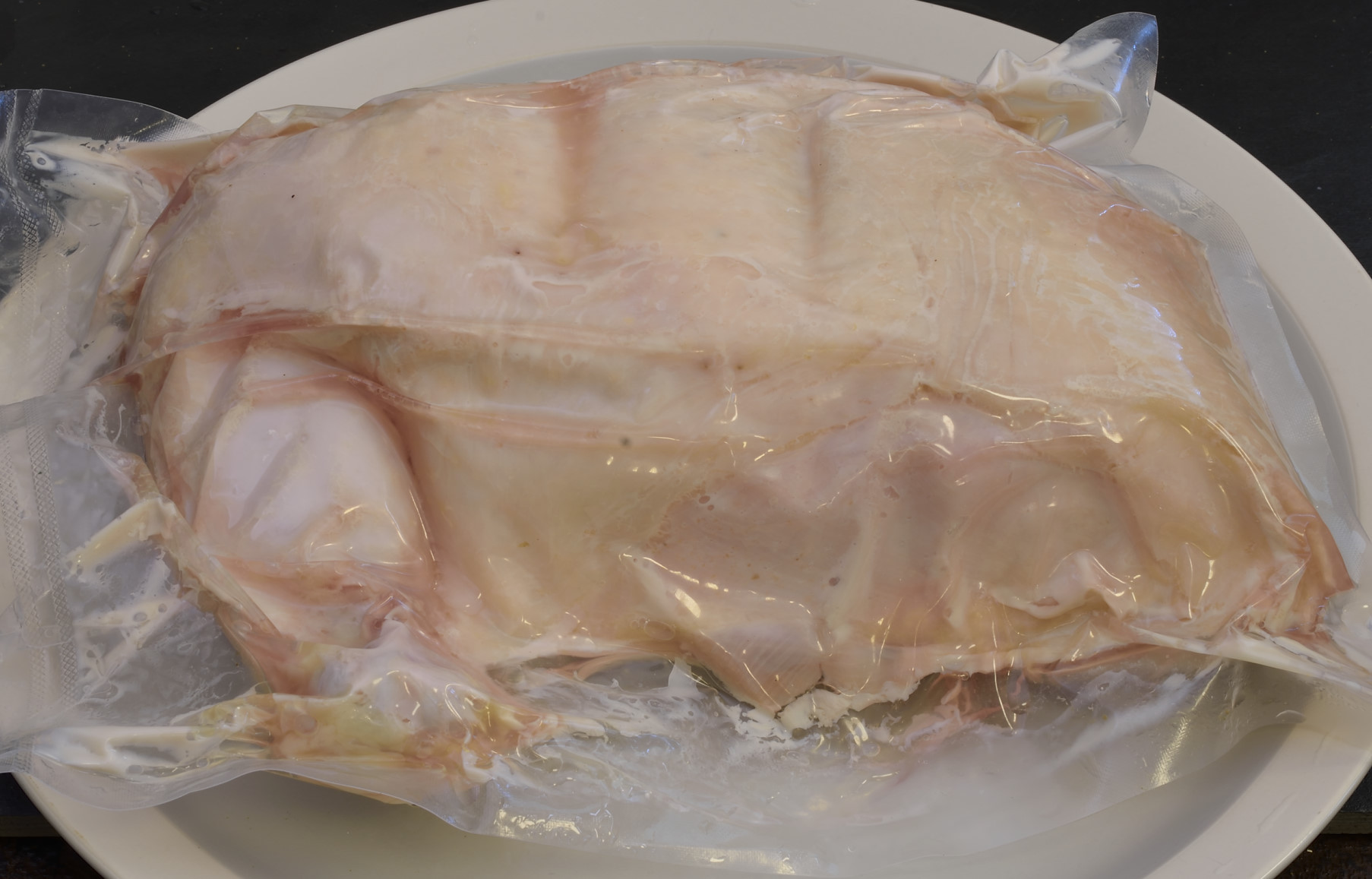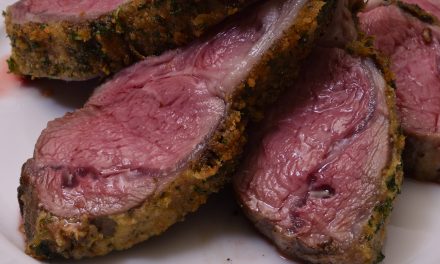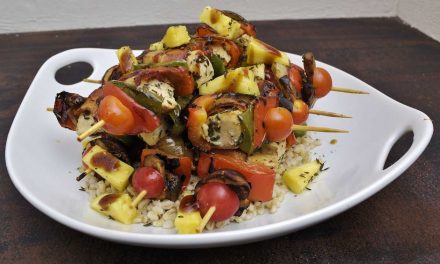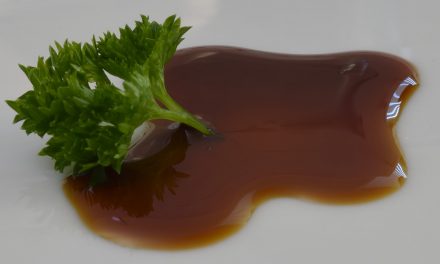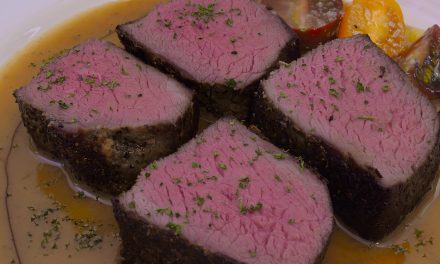Pardon the turkey, but pardon me first
Once reluctantly reunited with the family around the Thanksgiving table, we smother the incumbent anxious tension with a security blanket of football games, inordinate amounts of alcohol and quasi-probing discussions of tomorrow’s Black Friday shopping extravaganza. Discreetly ingesting pot has been introduced as an alternative stress moderator. We don’t get together for the food, that’s for sure. The only thing more akin to cardboard than old fashioned home roasted turkey is eggplant, and even that is a toss-up. We all say we love pumpkin pie–and we eat it exactly one day per year, just like the stuffing and the cranberries. As much as we look forward to those day after turkey sandwiches, Mom knows we better have lots of mayonnaise on hand to moisten the saddle-like leather that yesterday’s turkey becomes.
For better or for worse, Thanksgiving has become the only time of year when turkeys are cooked from raw and at home. A rapidly decreasing number of us still participate in the yearly family ritual out of a sense of obligatory duty. We celebrate Thanksgiving with our relatives because we will get scolded if we don’t. That doesn’t mean people don’t eat turkey the rest of the year–the turkey sandwich and the iconic club sandwich still reign supreme, right along side hamburgers and hot dogs.
WOOT came first?
I’ve been looking for whole raw turkeys in the store so I could post a “non-Thanksgiving” sous vide recipe and article. I finally did locate a dependable source, one of those new breeds of employee owned hybridized neighborhood markets with a no-frills warehouse feel. If not for that place, most of the turkey in the retail and wholesale market is sold pre-cooked. Bad news for Salmonella, I guess. Most of that turkey is processed sous vide, too, although you’d never know it from the label. Wait. Woot? Take a look at the turkey products available in your local chain market, especially the deli.
You don’t have to look very closely to notice that the wide assortment of “roasted,” smoked, etc. turkey breasts are sealed in very tight fitting, durable plastic. Why is this? Turkey is one of the greatest beneficiaries of sous vide processing. It’s pasteurized. It’s moist. It’s convenient. If you don’t crack the bag, it keeps in the fridge for a long long time.
The easy part has gotten harder
There is still a lot of shock and awe when people realize just how widespread sous vide processing already is–we discuss this in the FB Group that I host. Americans tend not to believe in anything until it comes to their attention in a TV commercial, and there has never been much mention of sous vide until lately.
Let the truth be known
By the ’70’s, the lion’s share of retail pre-cooked turkey and all of those other deli meats have been routinely cooked and pasteurized using sous vide technology. So, why all the subterfuge? Why are “egg bites” the first thing we have ever heard about that uses sous vide? Sous vide was pretty hush hush until the advertising analysts at the gigantic global coffee seller realized that it could become a valuable PR buzzword. In spite of its widespread use, nobody had been inclined to test the literal French translation of “under vacuum” as a means to lure Americans into opening their wallets. I have to hand it to Starbucks for at least figuring THAT out. I kinda wish it hadn’t been a generic version of ham and cheese quiche without the crust, but I guess I can’t blame them for starting their marketing campaign in the shallow end.
How do you pronounce that again?
The frozen food section and the aforementioned deli are chock full of foods discreetly prepared “Sue Veed.” Why? To eliminate food borne pathogens like salmonella for one thing, and shelf life for another. Anybody who has ever read the label on the milk carton has seen that word “pasteurized.” By now most people take it for granted without even really thinking about what it means.
Louis Pasteur was a French scientist who discovered that spoilage of protein foods could be arrested WITHOUT pressure canning if they were heated to a certain temperature, held for a certain amount of time and then quickly chilled. In the case of milk, this staved off a series of calamitous European epidemics like tuberculosis and a laundry list of other communicable diseases that had plagued 19th century Eurasia.
Bacteria had been discovered, but, once again, people weren’t fully convinced that they actually caused diseases. You know how them scientists are with all those highfalutin’ theories. Global warming is a hoax and vaccines are bad for you, right? Back then, people actually believed that if you carried fragrant flowers on your person you would be protected from getting the bubonic plague–remember that nursery rhyme “Ring around the rosie, pocket full of posies”? That is an obscure reference to Yersinia pestis, the pathogenic culprit responsible for millions of deaths. “Ashes, ashes, all fall down.”
What’s that you say? There’s money to be saved?
Boomerang forward to the ’70’s. Profit engineers realized that it was a lot cheaper to pasteurize in a sealed container than it was to pasteurize something in the open air and then rush to seal it before it could get contaminated in transit. It’s as simple as that. Rather than building and maintaining a costly, sterile laboratory, they could just vacuum seal the turkey breast (or ham, or beef, or head cheese, or whatever), follow and implement the USDA guidelines for pasteurization and cooling, freeze everything and ship wherever whenever.
Even fast food giants started doing this with burgers and other foods that were otherwise at risk of being cross contaminated with e. coli, clostridium perfringens and/or any other number of incidental pathogens that populate people’s fingers, skin, hair, and even breath. The more we get dumbed down, the more idiot proofing is required.
Back when there was just the one continent
Working in the industry since the ’60’s, I cooked my share of turkeys. We started with whole ones and progressively hacked them into smaller and smaller pieces. We were taught to avoid turkey hens and to favor Toms that weighed at least 25 lbs. There were several reasons for this, but just the bone to weight ratio was usually enough to justify this preference. Hens also had a much higher water content and, ironically, the males always had larger breasts.
Che-che-che-changes….
Lots of things have changed since then and scientific breeding practices can create turkeys featuring characteristics that just didn’t exist way back when. Now, they can produce pretty much anything they want, an otherwise scary thought. Fortunately, turkeys are still extremely stupid, so we needn’t worry about the prospect of axe-dodging Turkeyzillas crowding the landscape in the near future. Hopefully, anyway.
Whole or in part
For a more extensive explanation of how to remove the bones from a raw turkey, visit HERE. You can’t eat them, so you are going to have to remove them eventually anyway. They can be used to make gravy while you wait for the turkey–see HERE. Don’t feed them to your pets, by the way, whether they be raw or cooked. Very dangerous–too sharp.
So THAT’S what dinosaurs looked like
You can expect bones to comprise approximately one half of the total weight of a bone-in turkey. If you buy the turkey already boned out, the price/lb is considerably higher. Of course, this premium covers the labor cost incurred in trimming the turkey. Beyond that, if you buy the turkey without the bones, you are still paying for them–you just don’t get them. The producer then sells them off to pet food companies and bouillon manufacturers. The effort required to learn how to bone out a whole turkey becomes more valuable with each passing step–it is not difficult, as explained HERE.
Let’s cook something
Preheat the sous vide bath to
135 F/57 C.
Vacuum seal the breast in heat rated plastic and process for 7 hours to pasteurize.
What were once assignments are now obsessions
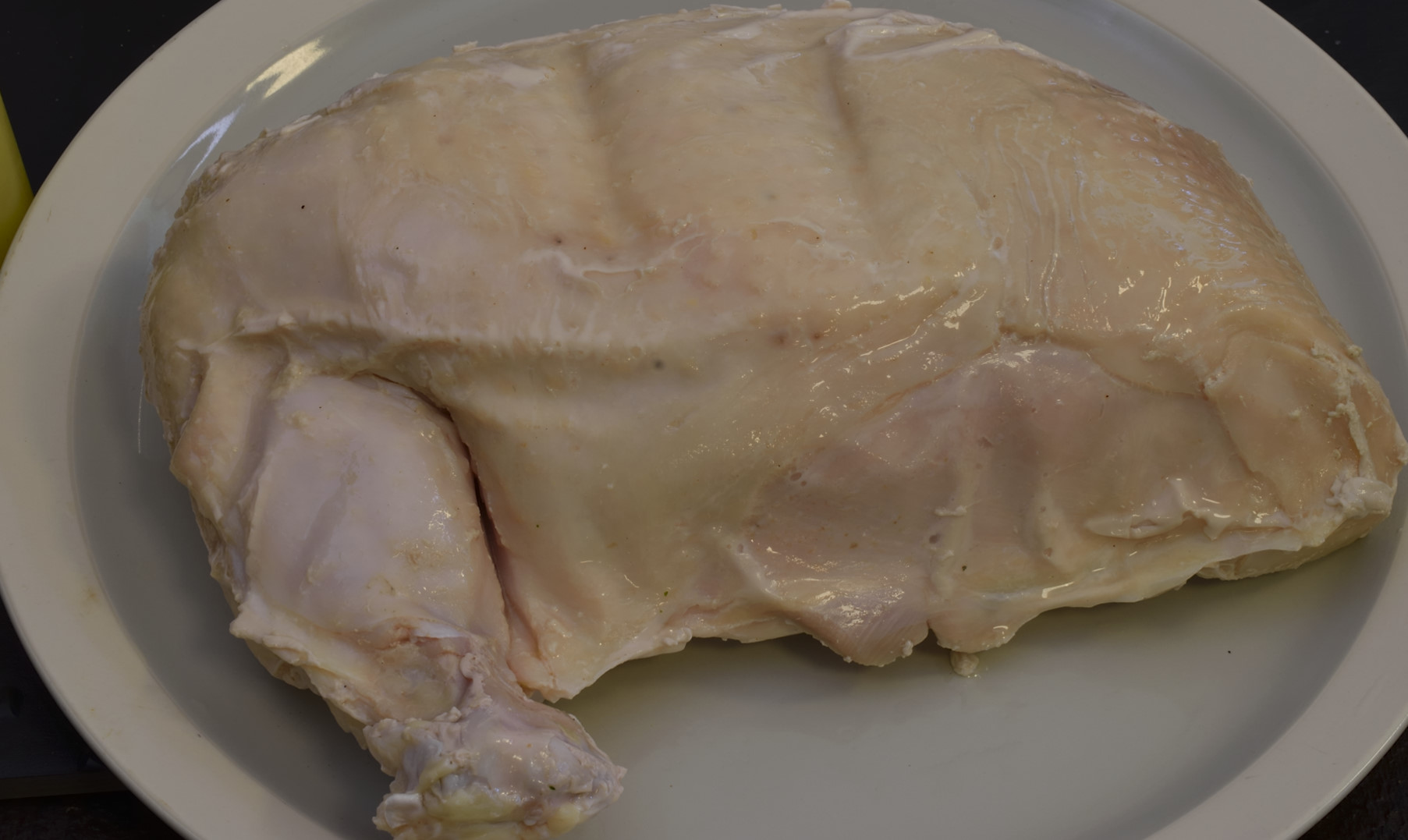
Remove the breast from the bag.
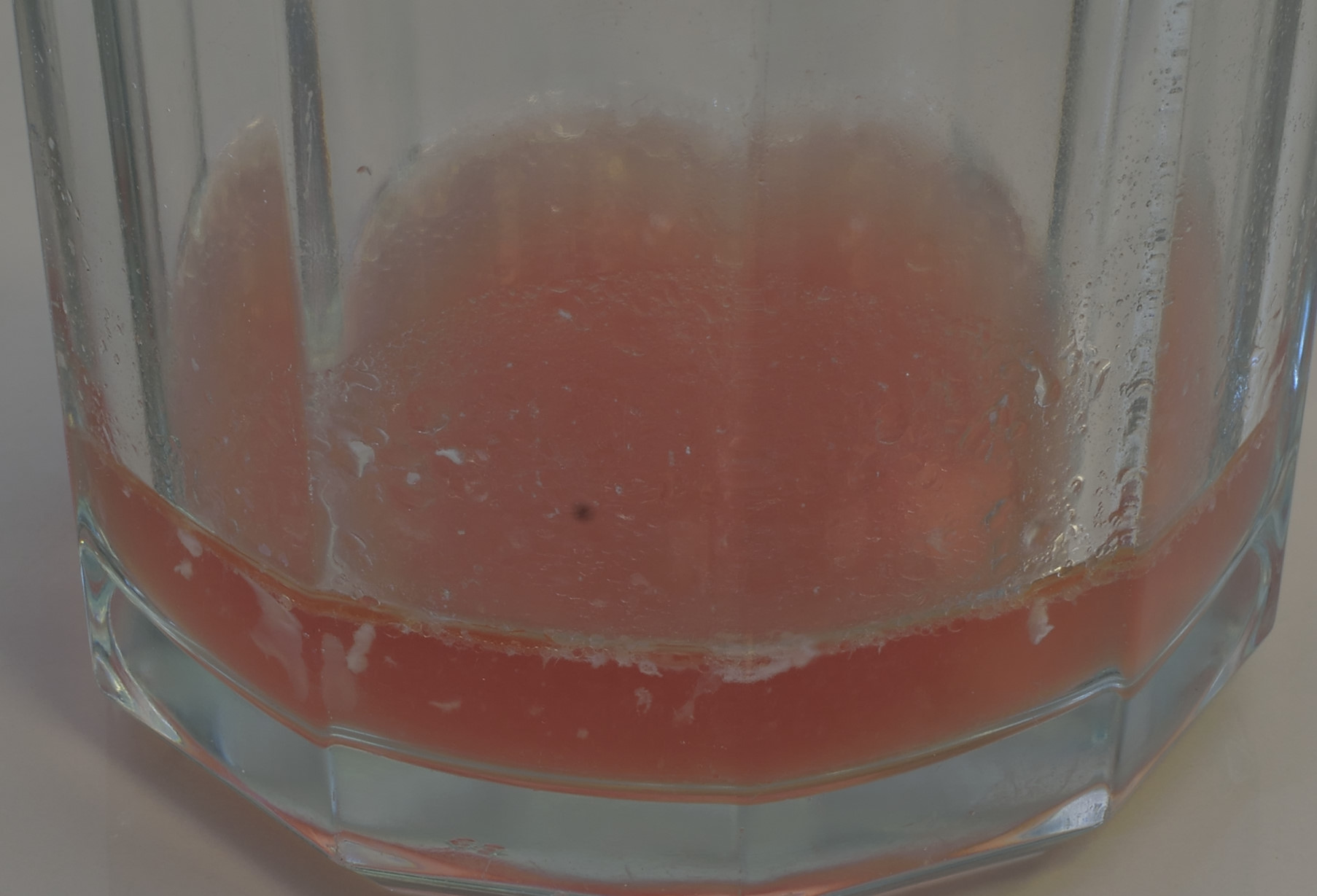
Harvest the juices. If this isn’t just about the most amazing thing about sous vide I don’t know what is. Cooking a turkey breast by any other conventional means will result in a weight loss of at least 25%. This is barely 4 oz coming from a 4 lb breast.
Sticky
In the raw state, albumins that are inherently present on the surface of meat help seasonings cling. Sous vide processing removes these egg white-like proteins. So, we replace them.
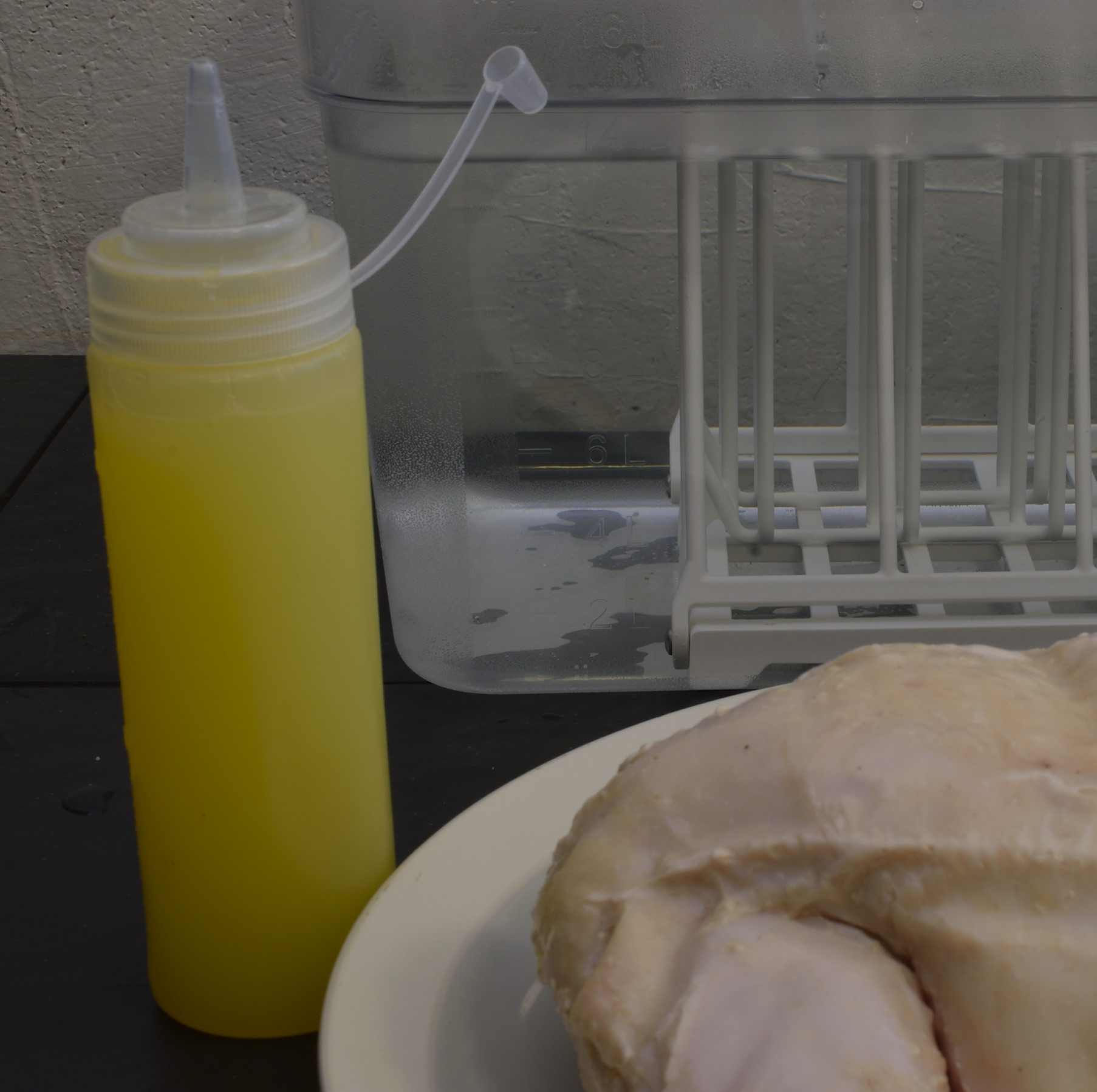
Lightly moisten the surface of the turkey breast with egg white. If you are separating eggs yourself, mix the whites half and half with water and beat well with a fork. We’re not making an omelet here. I do so much sous vide that I buy egg whites in cartons.
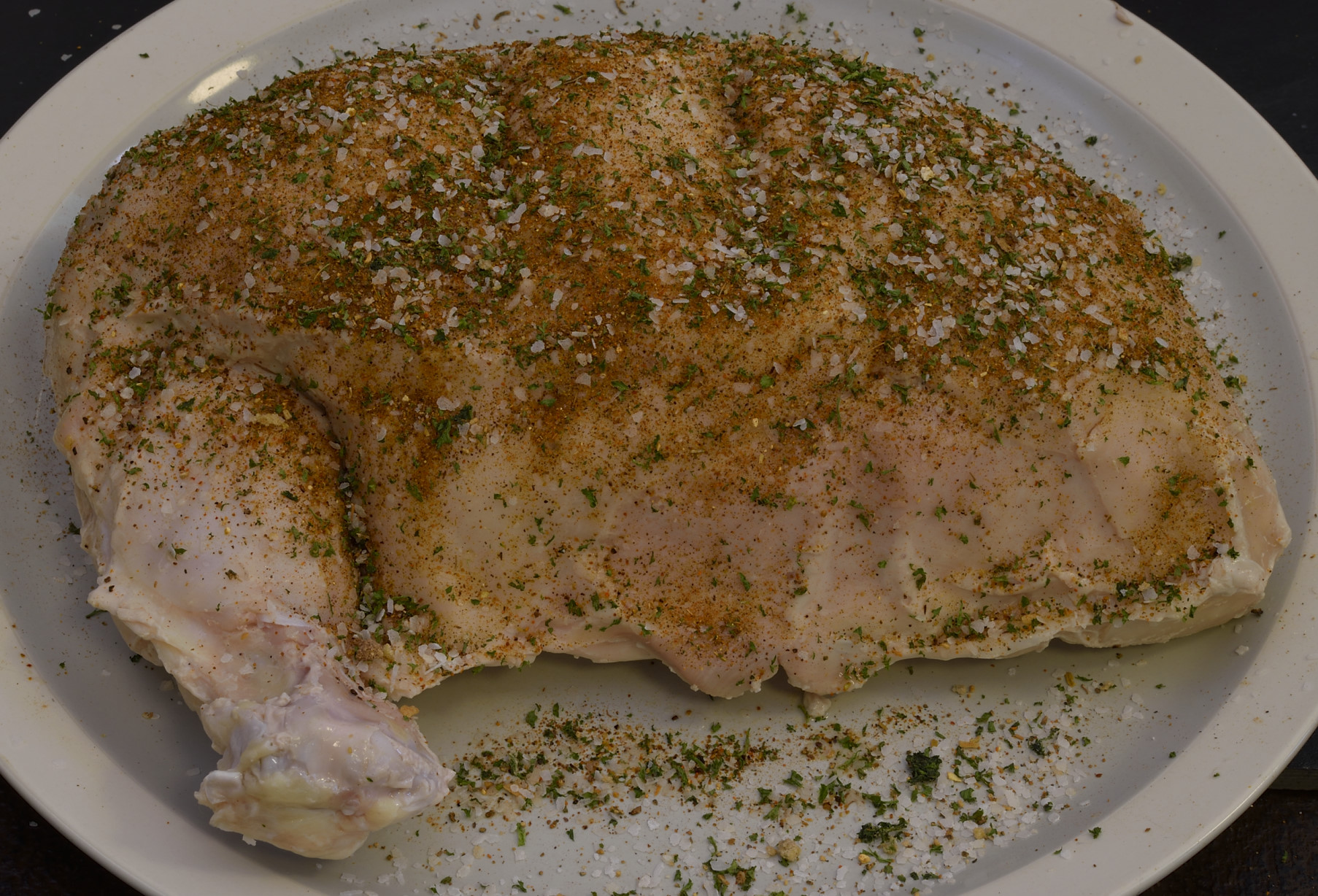
Sprinkle generously with salt and pepper or your favorite seasoning blend/rub.
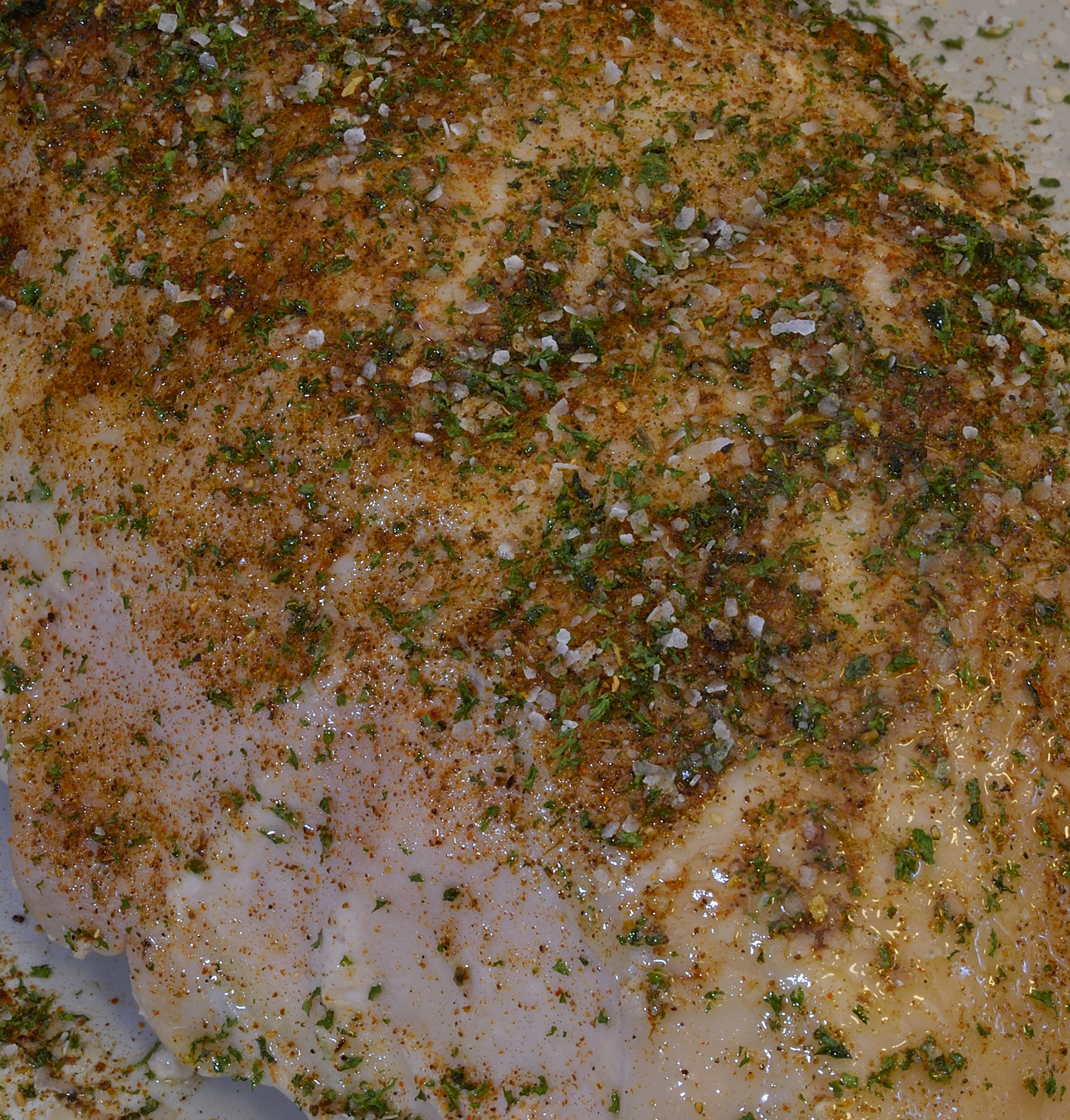
Drizzle or spray with a fine coating of oil.
Turn on the “broil” function that is common in most home ovens. If you’re oven doesn’t have one, just preheat the oven for one half hour to the highest temperature possible.
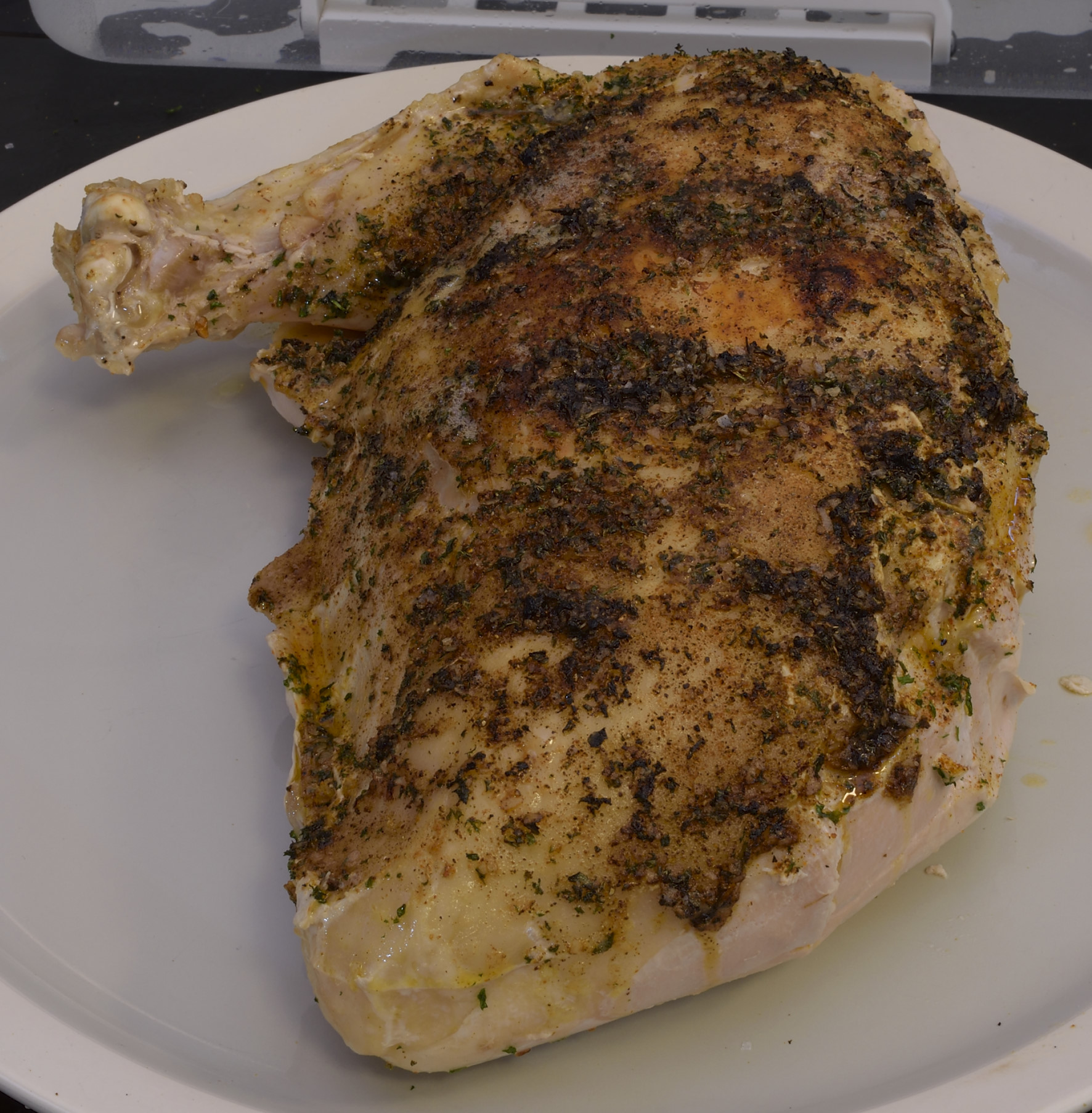
The turkey is already “mouth hot” so we are just creating the crispy skin effect–this took about five minutes–skin side only. It goes fast.
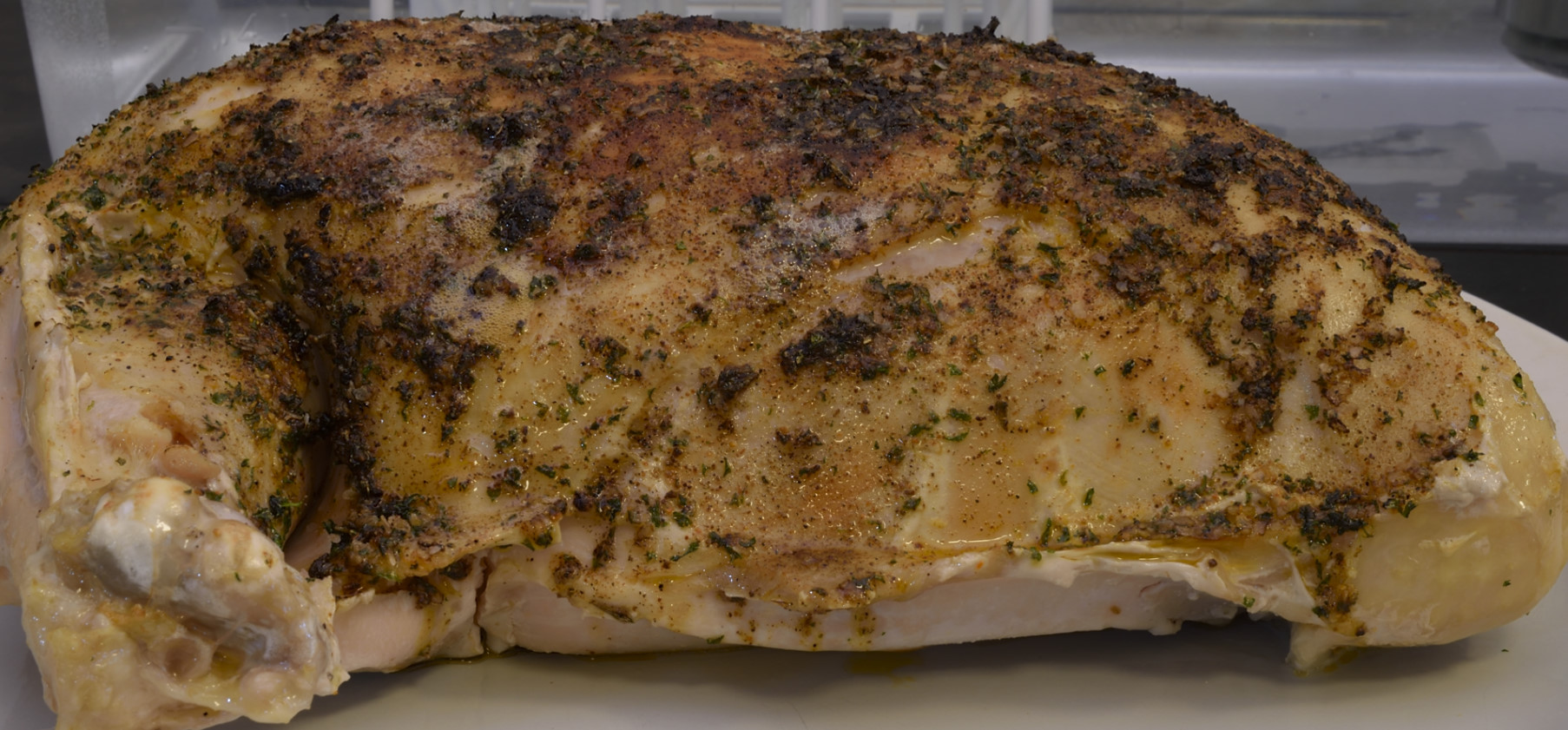
Remove from the oven and rest for five minutes to make it easier to handle.
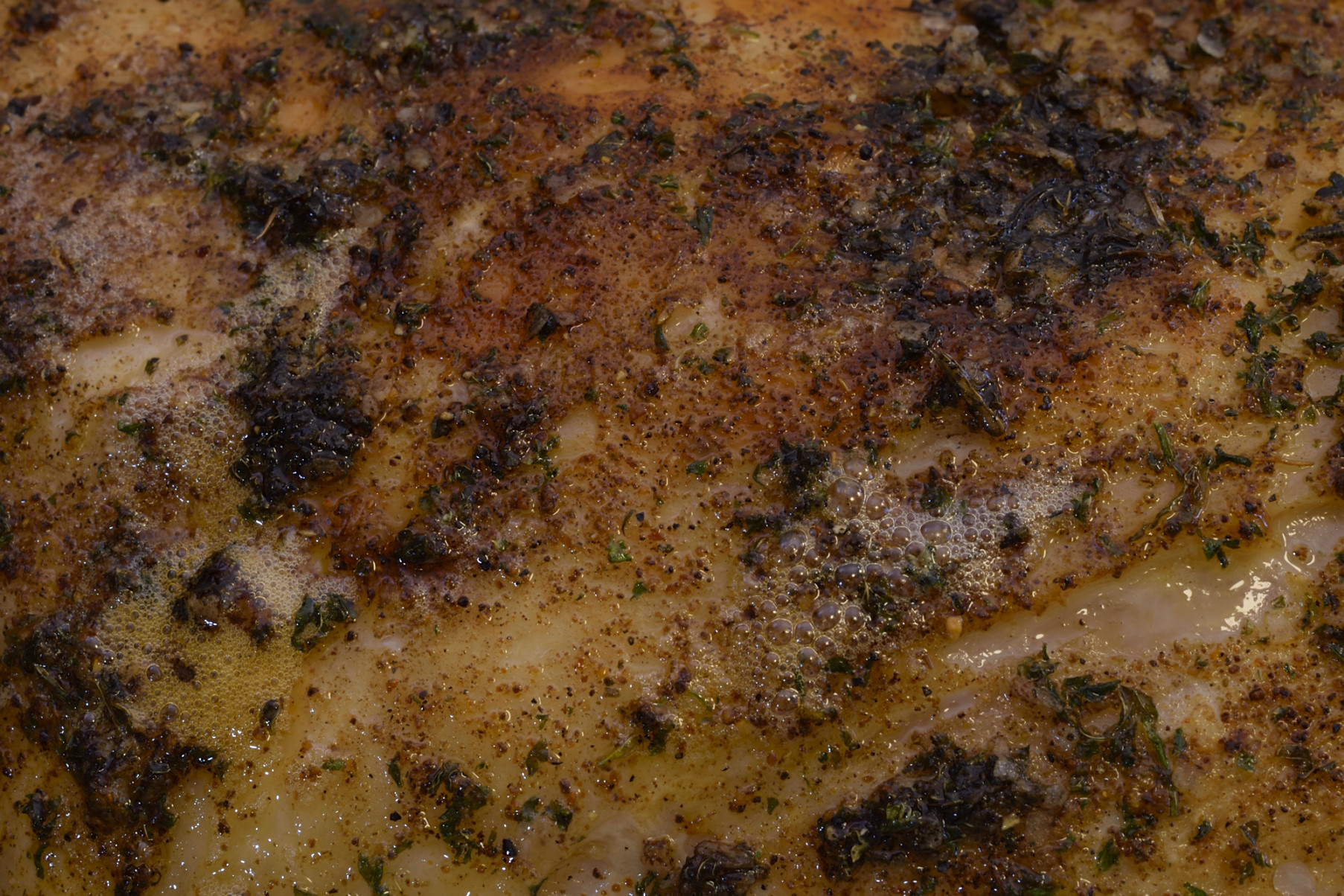
Success!
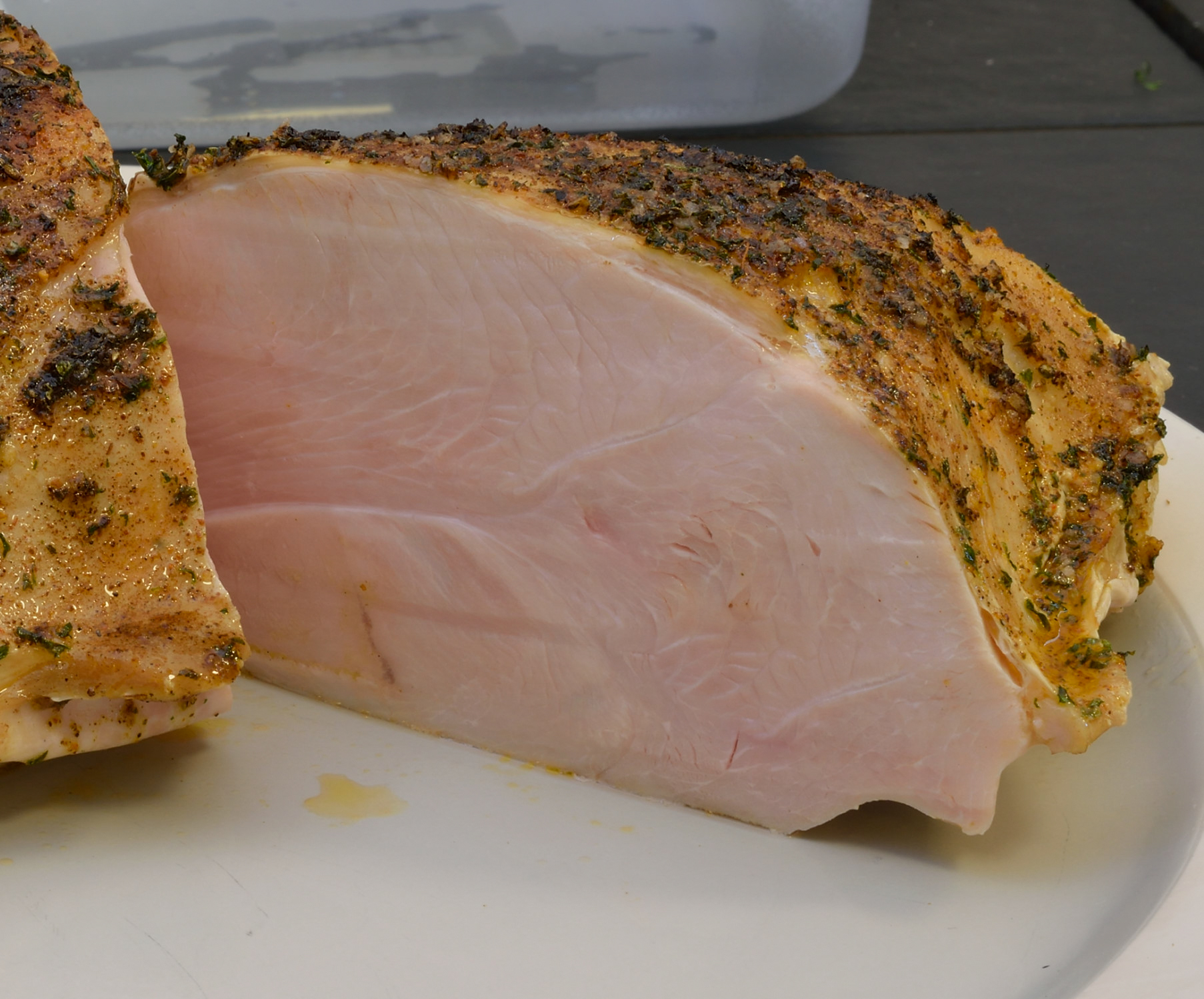
Great for a family gathering at the holidays, but a versatile and economical source of protein any time of year.
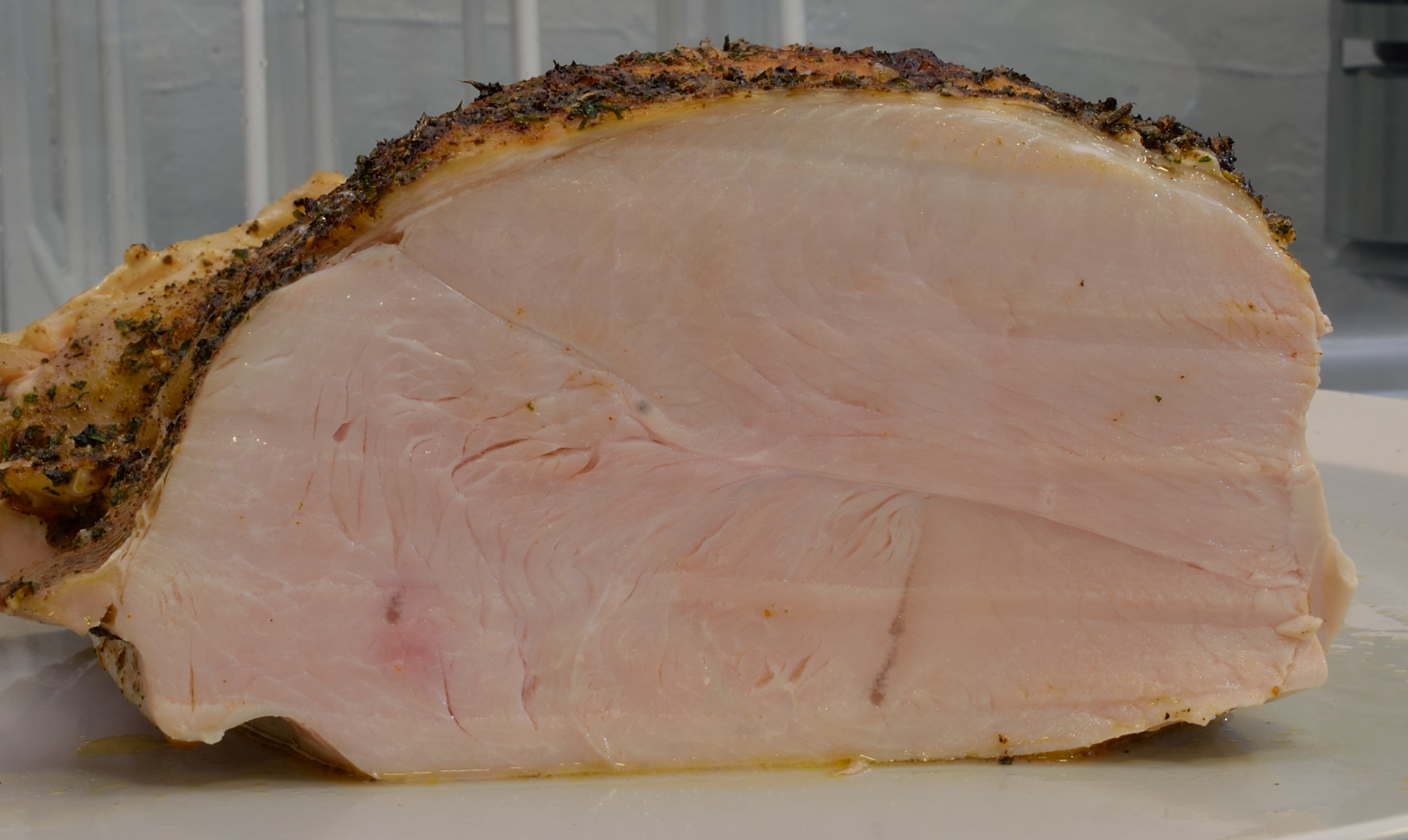
The “original” white meat. Accept no substitutes.
Epilogue
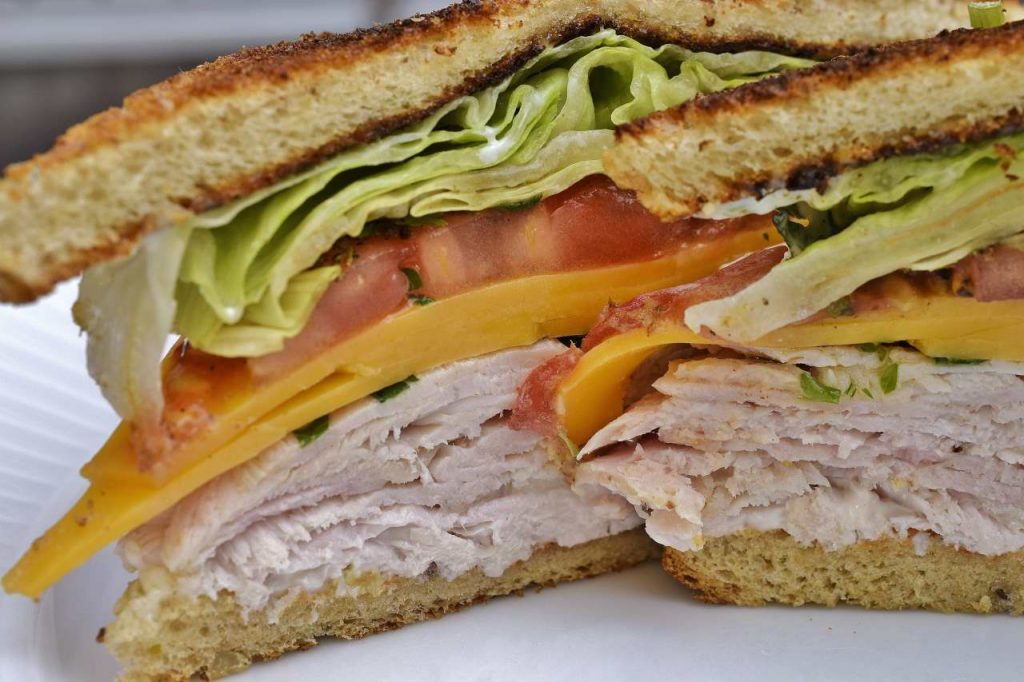
The next day sandwiches. It’s a Brave New World.

